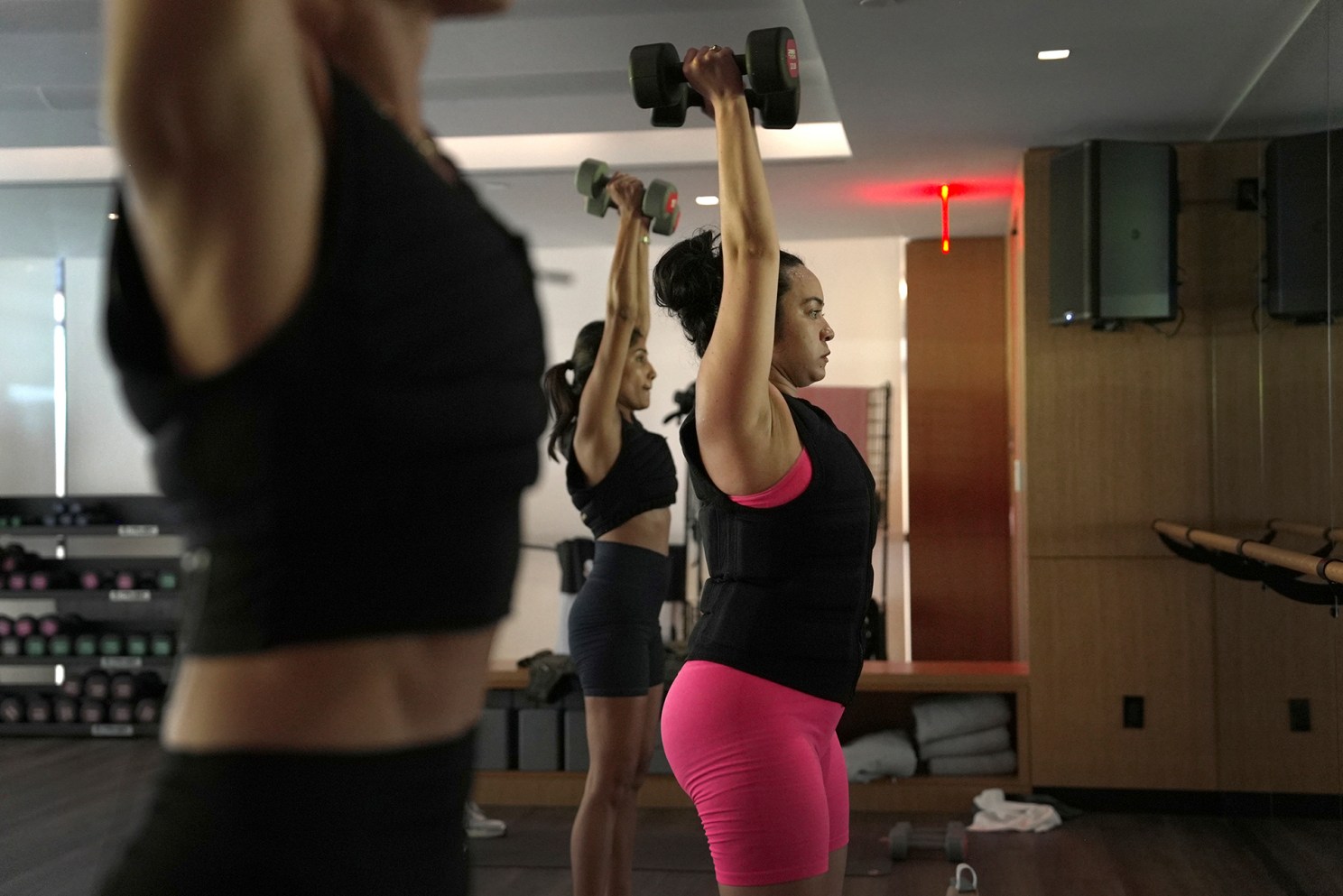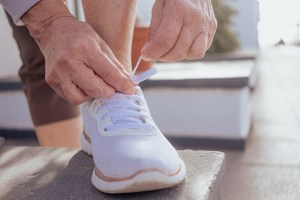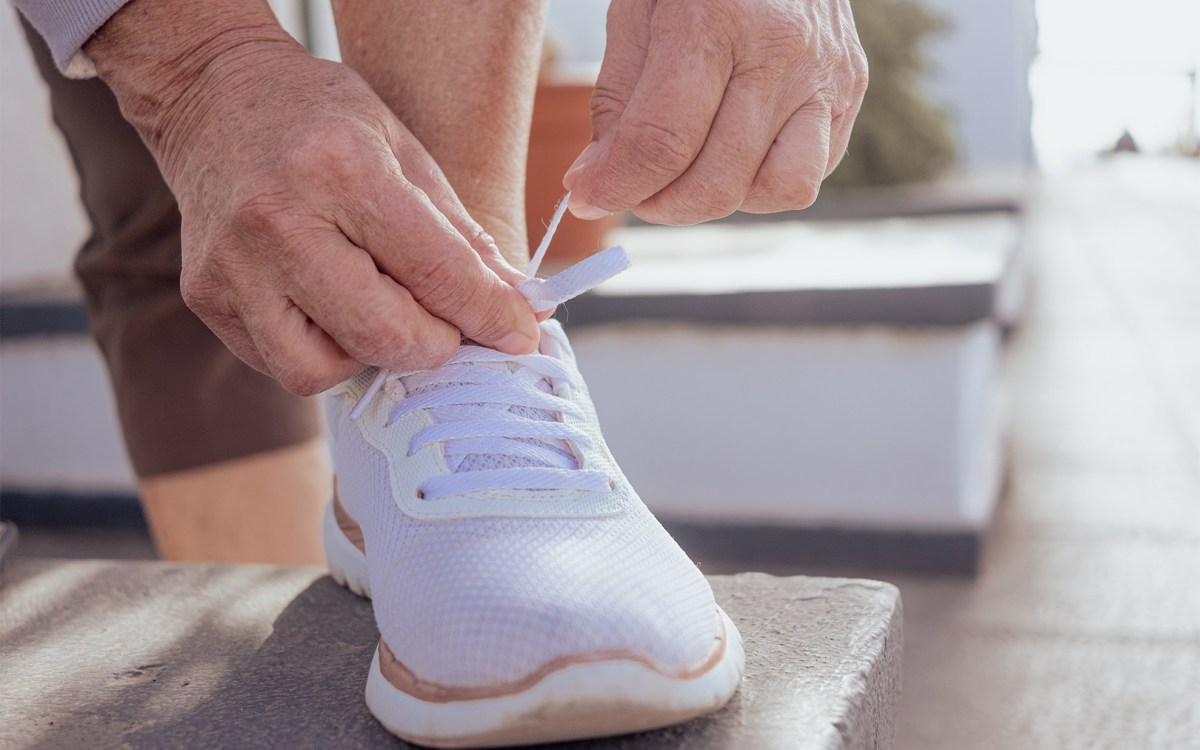Supercharge your workout with a weighted vest?

Shelby Lum/AP
Sports medicine specialist outlines potential benefits of social media trend
Weighted vests are one of the latest health trends popping up on social media. There are lots of claims about the benefits: They can help you lose weight and improve your strength, posture, and even your bone density. But how much of that is true?
We asked Sarah Eby, a sports medicine specialist with Mass General Brigham and Spaulding Rehabilitation, what weighted vests do and the potential benefits of incorporating them into your workout.
What does a weighted vest do?
You wear a weighted vest (also called a weight vest) over your shoulders, usually during a workout like walking, running, or strength training. It may be weighted straps that clip together like those of a backpack, or a full vest that also wraps around your chest. They often have pockets where you add or remove small weights.
The extra weight helps your body work harder and increases your energy output. “This means you consume more oxygen and burn more calories than you would when exercising without a weighted vest,” Eby said.
You may read different claims about what weighted vests can do for your health. Researchers are still studying how they affect your body during exercise.
Here are some possible benefits:
- Increase energy output and muscle loading during a workout. The extra weight during exercise puts more demand on your body, causing you to burn more calories and potentially build stronger muscles. “Wearing one during body-weight resistance training, like squats, lunges, step-ups, or push-ups, is going to load those muscles more and give a little boost versus true body-weight-only exercises,” Eby said.
- Improve sprint running performance. Weighted vest training may be a good option if you’re an athlete who wants to improve your sprinting power.
- Improve heart health. “All exercise is good for cardiovascular health,” Eby said. But there may be a slight benefit to wearing a weight vest during exercise because of the increased demand on your body.
According to Eby, other claims about the pros of using weighted vests have less evidence:
- They help you lose weight. While weight vests may help you burn more calories, Eby cautions that the evidence isn’t clear about helping you lose weight. A study comparing two groups of older adults, where one used weighted vests and the other didn’t, reported no significant difference in weight loss between the two. However, an alternative study did find weight loss and body composition benefits in adults with obesity who used a weighted vest eight hours a day.
- They improve posture. No studies have investigated this or shown evidence that weight vests improve posture. If you’re worried about your posture, Eby recommends physical therapy like targeted stretching, strengthening exercises, and neuromotor training. Working with a skilled provider and following their home exercise program recommendations can “retrain” your brain to hold and move your body in patterns that lead to better posture.
- They increase bone density and growth. A popular claim related to weight vests suggests they help maintain bone density, especially for people with osteoporosis or who are in perimenopause or menopause. However, a study investigated this and reported that wearing a weighted vest alone didn’t reduce bone loss in older adults. Hormone therapy may be a more effective treatment for preventing bone loss during menopause.
- They are good for muscle growth. Weight vests may help build muscle during certain exercises, like using the stair-climber. But Eby advises that the best way to grow your muscles is through resistance training. That means you exercise a muscle by working its full length against something, like a resistance band or free weight. Wearing a weighted vest during normal day-to-day activities doesn’t offer the same benefit, though wearing it while doing body-weight exercises (such as squats or push-ups) would provide similar benefits.
Getting started
If you want to try wearing a weighted vest during your next workout, Eby recommends starting with a vest that’s 5 percent of your body weight. If you weigh 160 pounds, for example, you might consider wearing an eight-pound weight vest. Make sure the vest fits snugly, and the weight doesn’t throw off your balance.
A study showed that runners who wore weighted vests of 5 percent of their body mass were able to keep up their normal level of performance. But when they bumped that up to 10 percent, their performance declined.
“Start low and go slow. You don’t want to overload your body and risk injury,” Eby said. “You can increase the weight as your body adjusts.”
Eby recommends checking with your healthcare provider before starting any new fitness routine.
You may want to avoid wearing a weight vest if you have:
- Neck, shoulder, or back pain
- Arthritis, joint pain, or other injury, such as in the hips, knees, or ankles
- Heart conditions like heart disease or high blood pressure, as weight vest training makes your heart work harder
Eby emphasizes the importance of just getting out there and exercising. “If a weighted vest motivates someone to go for a walk, they should absolutely wear it,” she said.
The Centers for Disease Control and Prevention recommend adults get at least 150 minutes of moderate intensity exercise every week, which could be walking, strength training, or another type of physical activity. “Whether you spread it out during the week or save it for the weekend, what’s important is getting that exercise in.”





